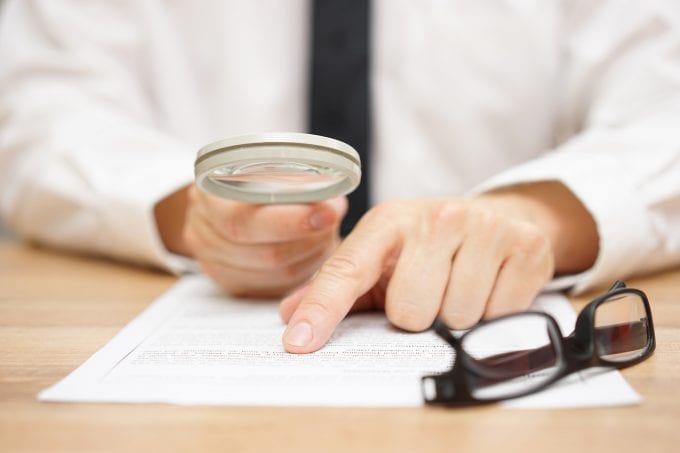If you’re a business of any size, winning a government contract can be lucrative. Once you get one government contract, if you complete the job well and you prove yourself, you may be more likely to get others.
It can be almost like a business in and of itself to submit proposals for government contracts, however.
For example, if you’re competing in a certain sector, there are end-to-end estimating software solutions like ProjStream that can help with project cost management.
These tools are good to invest in for companies that are going to regularly be competing for government contracts because they allow them to develop cost estimates faster and more easily, which is also driven by the data.
Beyond that, what else do you need to know about writing a competitive proposal for a government contract?
A proposal is something initiated when the government, acting as a customer, needs a good or service. They then ask companies to submit offers basically explaining not just what they would charge to do the work, but how they would complete it. When the government wants proposals, it’s called a request for proposal or RFP.
The RFP outlines what the government needs as well as when said work is needed, but the contract placing a bid has to go beyond this.
It’s that expansion of content and knowing what to include and how to do so that can separate winning proposals.
General Overview of What’s Needed in a Proposal

First and foremost, when creating a proposal, it needs to include the cost, schedule, and scope of work in a well-defined way that’s clear and easy to understand.
Estimates need to be based on past performance when possible, which is why software like what was named above can come in handy.
A proposal will include a work breakdown structure, and then there’s a statement of work that relates to this.
A proposal should also include risks and opportunities.
Before you can get started on any of this, you need to read the RFP properly.
You don’t want to skim to the point that you miss key details of the RFP.
Your goal with your proposal for any project is to demonstrate that you are the business best equipped and suited to meet the government’s needs, so you have to know what those needs are.
Before you start the proposal, you also need to think about the Return on Investment that’s going to come from actually submitting the proposal. Will the costs associated with the proposal be greater than the potential return?
There are also two types of offers, although the terms are sometimes used interchangeably.
There are bids and proposals.
Bids are part of sealed purchases, and proposals are awards that are extended after negotiation.
Position Yourself as a Solution

Don’t just reiterate what’s in the RFP—take what’s in it and use it as a way to position yourself as a solution.
The RFP is the problem at hand for the government. You need to be able to clearly identify the problem before you can frame yourself as the solution. Not only do you need to be the solution, but you also need to be a solution that’s within budget and meets requirements.
As you’re writing a proposal, you want to ensure that you convey that you understand each aspect of the project and that you can achieve all of them within the outlined time frame.
The Evaluation Process

You can do some research to learn more about this in-depth, but it’s good to have an idea of how the government evaluates proposals.
When you submit a proposal, there are usually teams that evaluate them. They may be made up mostly of subject matter experts, or it could be as simple as having someone with the time go over them.
This means your audience can be very diverse in terms of their level of expertise on the subject at hand, so you want to write with that in mind.
Then, there are evaluation factors that are used by the committees to compare proposals.
Evaluations seek to identify significant strengths and weaknesses, as well as deficiencies.
Four core things that are specifically considered in evaluations are first, the technical approach, then management approach, past performance, and cost.
As far as the technical approach, you want to show that you understand the work and that you have an approach that is realistic and feasible to complete said work.
Under the category of management approach, you want to be able to show you have the right business approach—for example, the right team and staff to get the work done.
Past performance is an evaluation of whether you have relevant experience relative to scope, complexity and size, and evaluators want to see that when working on projects similar in scale or scope that the performance was good.
It is also best to create a signed proposal to ensure that every detail that is included is checked and noted.
Finally, the cost has to be reasonable and realistic, as well as consistent with what’s defined as the best value for the effort required.
Other Things to Keep In Mind

There are a few other things to keep in mind if you’re responding to an RFP with a proposal.
First, create a proposal outline that is a skeleton of what you’re going to include in your proposal. This will help you stay organized and streamline the writing process.
As part of this, you might consider creating a checklist that you’re going to include in your proposal. This will help you make sure you’re following the requirements outlined in the RFP.
Above all else, the goal of a proposal is to make a compelling, logical, and organized case that you are the best business for the job. You are a solution, and that’s the story you should tell throughout the entirety of your proposal.
You want to remain focused and specific throughout, and make sure you’re concisely making your case.
With that should be pricing that’s competitive as well as fair, because no matter what you may have heard, pricing does matter in the selection process.









